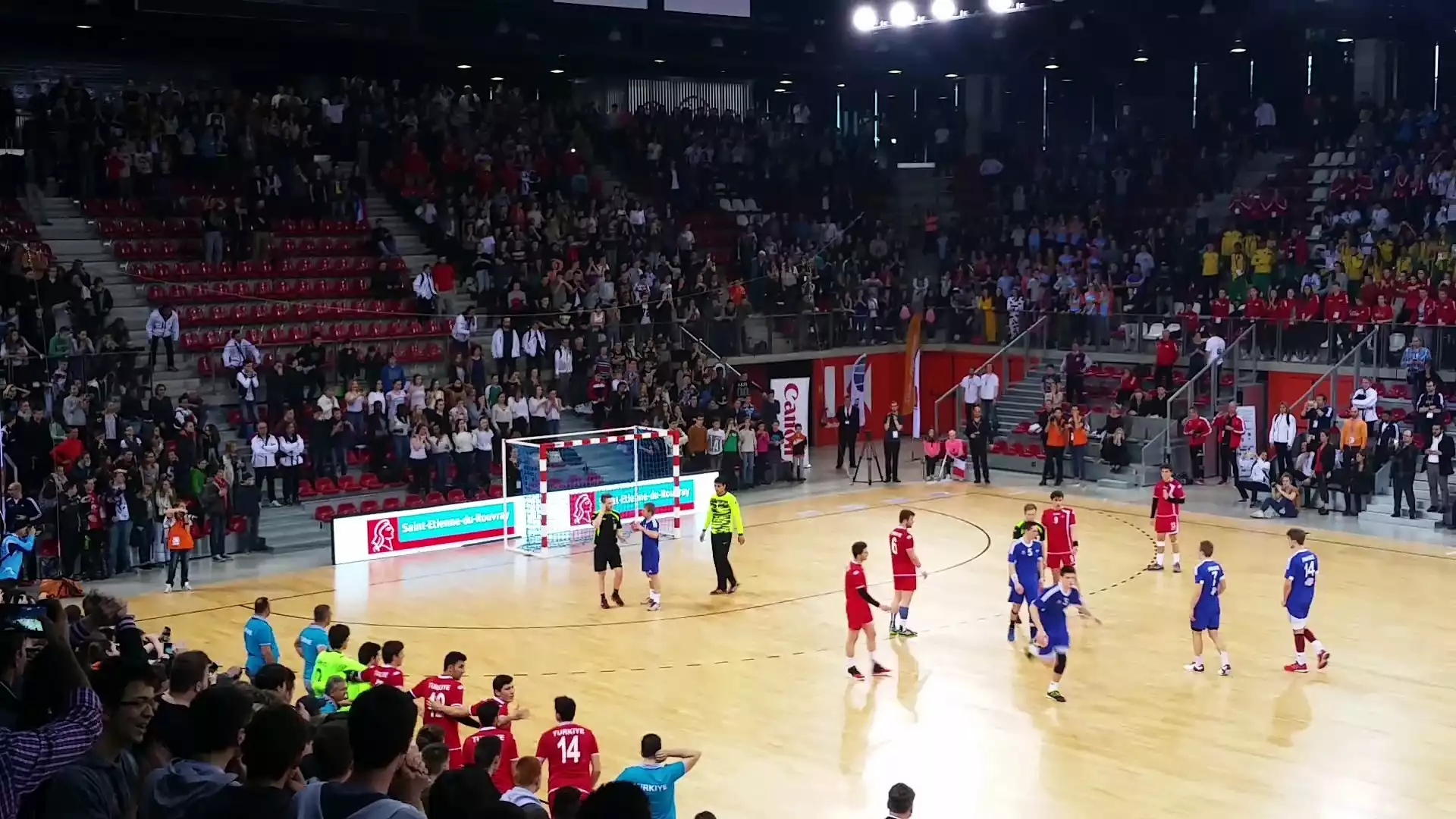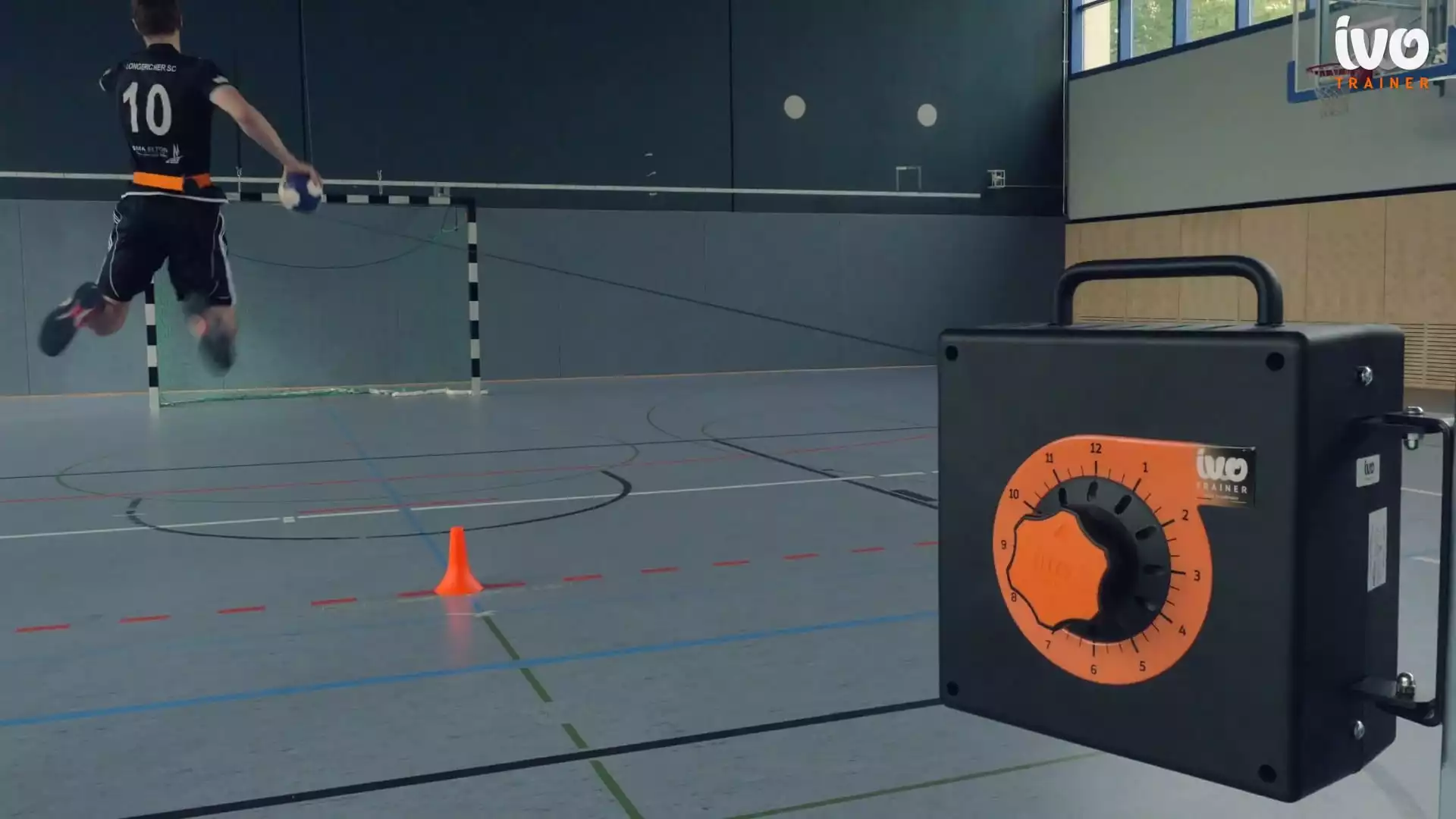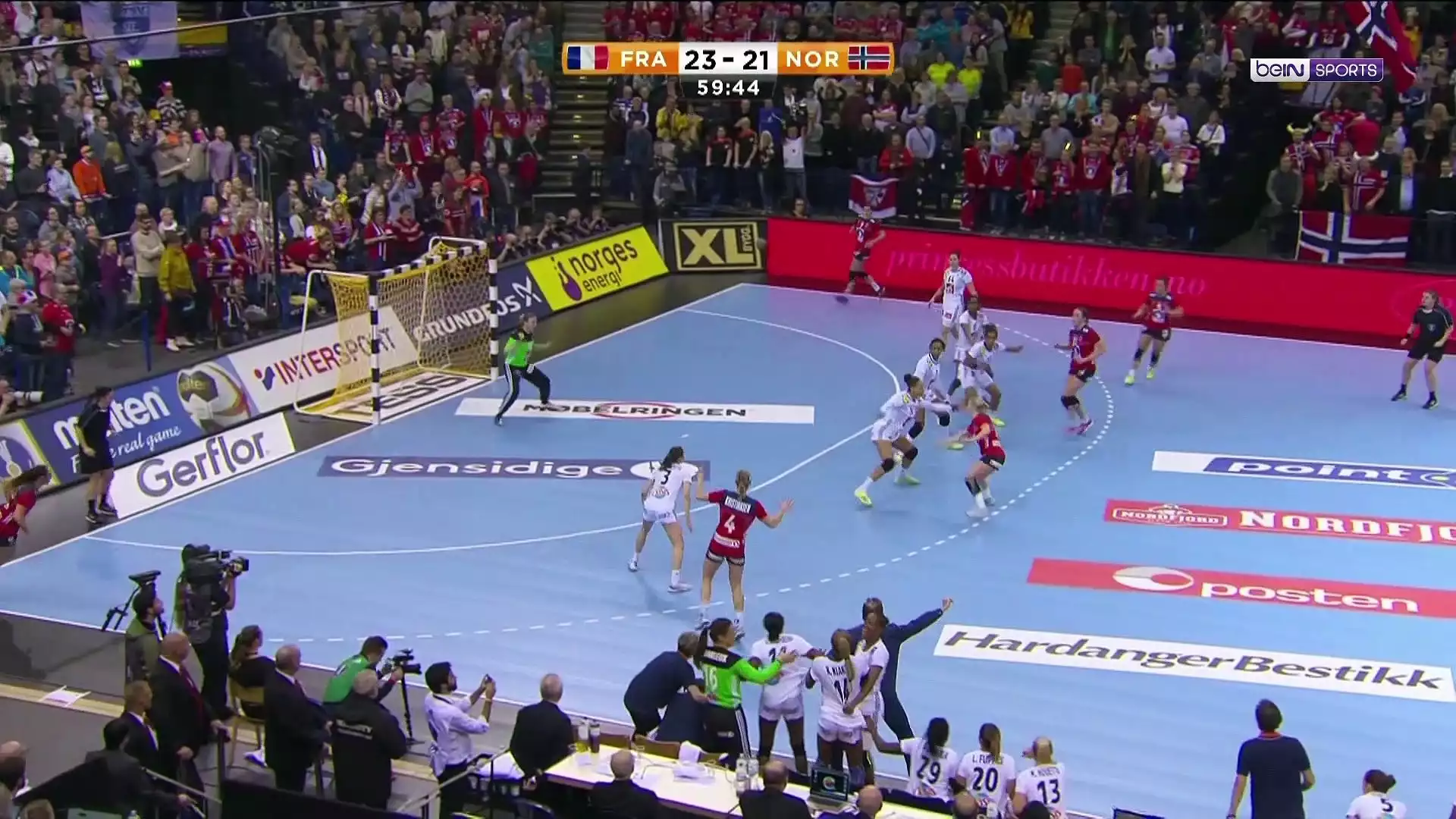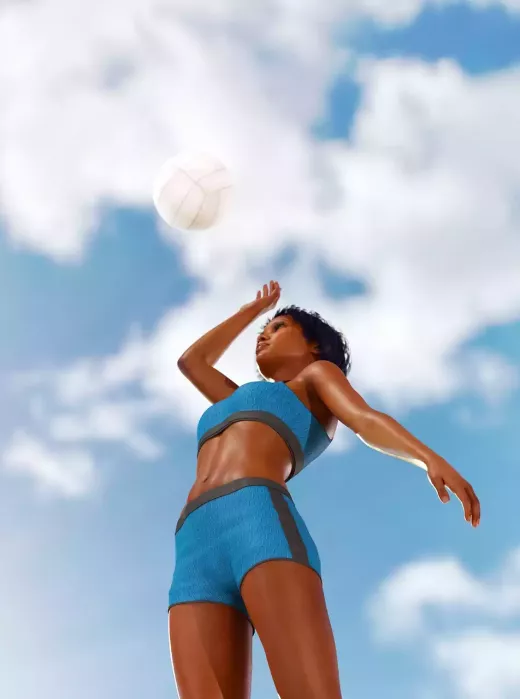The Importance of Defense in Handball
Defense is the backbone of any successful handball team. While offense may get all the glory, it's the defense that wins championships. A strong defensive unit can disrupt the opponent's attack, create turnovers, and provide scoring opportunities for your team. Without a solid defense, even the most talented offensive players will struggle to win games. So, why is defense so important in handball?
Firstly, defense sets the tone for the game. By putting pressure on the opposing team, you can force them into making mistakes and capitalize on their errors. A strong defense can also demoralize the opposition, making it harder for them to execute their game plan. Secondly, defense creates opportunities for your team. By creating turnovers, you can quickly transition from defense to offense and catch the opposing team off guard. Lastly, defense builds team chemistry. Effective defense requires communication, coordination, and trust among teammates. By working together on defense, you can build a cohesive unit that is difficult to break down.
To become a master of defense in handball, you must understand the basic defensive tactics and positions.
Basic Defensive Tactics and Positions
In handball, there are several defensive positions that players can adopt depending on the situation. The most common positions include the goalkeeper, the center back, and the wing defenders. Each position has a specific role and responsibility in the defensive unit.
The goalkeeper is the last line of defense and plays a crucial role in stopping shots on goal. They must have quick reflexes, good positioning, and excellent shot-blocking skills. The center back is responsible for organizing the defense and directing the players on the court. They must have a good understanding of the game, strong communication skills, and the ability to read the opposition's attack. The wing defenders are responsible for defending the wings and preventing the opposing team from creating scoring opportunities from the sides. They must be agile, fast, and have good anticipation skills.
In addition to the specific positions, there are also basic defensive tactics that all players should be familiar with. These tactics include man-to-man marking, zone defense, and pressing. Man-to-man marking involves each defender being assigned a specific player to mark and defend. Zone defense involves defenders guarding a specific area rather than a specific player. Pressing is a more aggressive tactic where defenders put pressure on the ball carrier to force turnovers and mistakes.
By understanding the different defensive positions and tactics, you can better contribute to your team's defensive efforts.
Communication and Teamwork in Handball Defense
Effective communication is the cornerstone of a strong handball defense. Without clear and concise communication, defenders will struggle to coordinate their movements, anticipate the opponent's attack, and make timely switches. Good communication ensures that defenders are on the same page, making it harder for the opposing team to find gaps in the defense.
There are several ways in which communication can be improved in handball defense. Firstly, players must develop a common language and set of signals to communicate on the court. This can include hand signals, verbal cues, and non-verbal communication. Secondly, players should be encouraged to speak up and provide information to their teammates. This can include calling out switches, providing updates on the opponent's movements, and alerting teammates of potential threats. Lastly, communication should be practiced and reinforced during training sessions. By incorporating communication drills and exercises, players can develop their communication skills and become more effective defenders.
In addition to communication, teamwork is also essential in handball defense. Defenders must trust their teammates to fulfill their defensive responsibilities and provide support when needed. By working together as a unit, defenders can cover more ground, close gaps in the defense, and create turnovers. Trust and teamwork are built through practice, repetition, and a shared commitment to excellence.
Strategies for Stopping Fast Breaks
Fast breaks are one of the most challenging situations to defend in handball. When the opposing team quickly transitions from defense to offense, it can catch defenders off guard and create scoring opportunities. However, with the right strategies and tactics, you can minimize the effectiveness of fast breaks and neutralize the opposing team's advantage.
The key to stopping fast breaks is to quickly transition from offense to defense. As soon as your team loses possession of the ball, all players should immediately transition to a defensive position. This involves sprinting back to the defensive half of the court, identifying potential threats, and communicating with teammates. By getting back on defense quickly, you can prevent the opposing team from capitalizing on the fast break.
Another strategy is to disrupt the flow of the fast break by applying pressure on the ball carrier. By pressuring the ball carrier, you can force them into making mistakes or passing the ball to a less dangerous position. This can buy time for the rest of your team to get back on defense and set up in a more organized manner.
Additionally, defenders should be aware of their positioning and spacing during a fast break. By maintaining proper spacing and positioning, defenders can cover more ground and make it harder for the opposing team to find gaps in the defense. This involves staying between the ball carrier and the goal, closing passing lanes, and anticipating the opponent's movements.
By implementing these strategies, you can effectively defend against fast breaks and prevent the opposing team from capitalizing on quick transitions.
Defending Against Different Attacking Formations
In handball, different teams may employ various attacking formations to confuse and outmaneuver the defense. As a defender, it is essential to understand these formations and adapt your defensive tactics accordingly.
One common attacking formation is the 6-0 formation, where all six outfield players are positioned in a line across the court. This formation aims to create gaps in the defense and open up shooting opportunities. To counter this formation, defenders must maintain good spacing, communicate effectively, and quickly switch positions when necessary.
Another common formation is the 5-1 formation, where one player acts as a pivot and the other five players spread out across the court. This formation aims to create mismatches and isolate defenders. To defend against the 5-1 formation, defenders must be aware of the pivot player and communicate with their teammates to prevent easy scoring opportunities.
Other attacking formations include the 4-2, 3-3, and 2-4 formations, each with its own strengths and weaknesses. Defenders must study and analyze these formations to identify patterns, weaknesses, and potential opportunities to disrupt the attack.
By understanding and adapting to different attacking formations, defenders can effectively neutralize the opponent's offense and create turnovers.
Individual Defensive Skills and Techniques
While teamwork and communication are vital in handball defense, individual defensive skills and techniques are equally important. As a defender, it is crucial to develop and master these skills to become a well-rounded and effective defender.
One essential defensive skill is blocking shots. Blocking shots involves positioning your body in front of the shooter, raising your arms, and timing your jump to intercept the shot. It requires good timing, coordination, and anticipation. By effectively blocking shots, you can prevent the opposing team from scoring and create turnovers.
Another important defensive skill is one-on-one defending. This involves staying close to your assigned player, maintaining good positioning, and using your body to deny scoring opportunities. One-on-one defending requires agility, footwork, and the ability to read the opponent's movements.
Other defensive techniques include intercepting passes, disrupting the opponent's dribble, and applying pressure on the ball carrier. These techniques require quick reactions, good anticipation skills, and the ability to think one step ahead of the opponent.
To develop these individual defensive skills and techniques, regular practice and repetition are crucial. By incorporating defensive drills and exercises into your training routine, you can improve your agility, reaction time, and overall defensive capabilities.
Developing Agility and Speed for Effective Defense
Agility and speed are essential attributes for effective defense in handball. Defenders must be able to change direction quickly, react to the opponent's movements, and cover ground rapidly. Developing agility and speed requires specific training and conditioning exercises.
One effective exercise for developing agility is ladder drills. Ladder drills involve placing a ladder on the ground and performing various footwork patterns through the rungs of the ladder. This helps improve footwork, coordination, and quickness.
Another exercise is cone drills. Cone drills involve setting up cones in a specific pattern and performing various movements around the cones. This can include lateral movements, quick changes of direction, and accelerating and decelerating.
In addition to agility exercises, speed training is also essential for effective defense. Sprinting exercises, such as interval training and shuttle runs, can help improve speed, acceleration, and stamina. These exercises simulate game-like situations and help defenders become faster and more explosive on the court.
By incorporating agility and speed training into your routine, you can improve your defensive capabilities and become a more formidable presence on the handball court.
Drills and Exercises to Improve Defensive Skills
To become a master of defense in handball, regular practice and training are essential. There are several drills and exercises that can help improve your defensive skills and elevate your game to the next level.
One effective drill is the "mirror drill." In this drill, two players face each other and mirror each other's movements. This helps develop agility, footwork, and reaction time. The drill can be modified to include different defensive scenarios, such as defending against a fast break or one-on-one defending.
Another useful exercise is the "passing lane drill." In this drill, players form two lines on either side of the court, and a coach or teammate passes the ball across the court. Defenders must quickly react, move to intercept the pass, and disrupt the opponent's attack. This drill helps improve anticipation, reaction time, and positioning.
Other defensive drills include "defensive stance drills," "defensive slides," and "closeout drills." These drills focus on proper defensive positioning, footwork, and closeout techniques.
By incorporating these drills and exercises into your training routine, you can improve your defensive skills, develop muscle memory, and become a more effective defender.
Analyzing and Learning from Professional Handball Defenders
One of the best ways to improve your defensive skills in handball is to study and learn from professional defenders. Professional handball players have honed their skills through years of practice, experience, and training. By analyzing their techniques, strategies, and decision-making, you can gain valuable insights that can be applied to your own game.
Watch professional handball matches and pay close attention to the defensive aspects of the game. Observe how defenders position themselves, communicate with their teammates, and react to different situations. Take note of their footwork, body positioning, and defensive techniques. Analyze their decision-making process and try to understand why they make certain defensive choices.
In addition to watching matches, study interviews and documentaries featuring professional handball defenders. Listen to their advice, learn from their experiences, and incorporate their wisdom into your own game.
Lastly, try to emulate the techniques and strategies of professional defenders during your own training sessions and games. Practice their defensive techniques, experiment with their strategies, and adapt their decision-making process to fit your own playing style.
By analyzing and learning from professional handball defenders, you can gain valuable insights that can help elevate your defensive game to new heights.










.png?size=50)